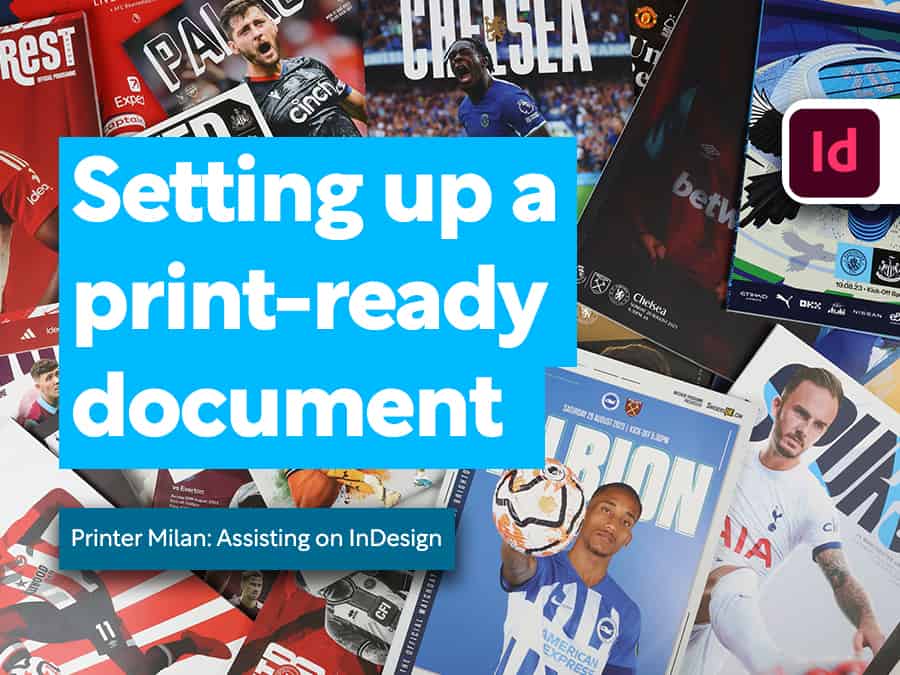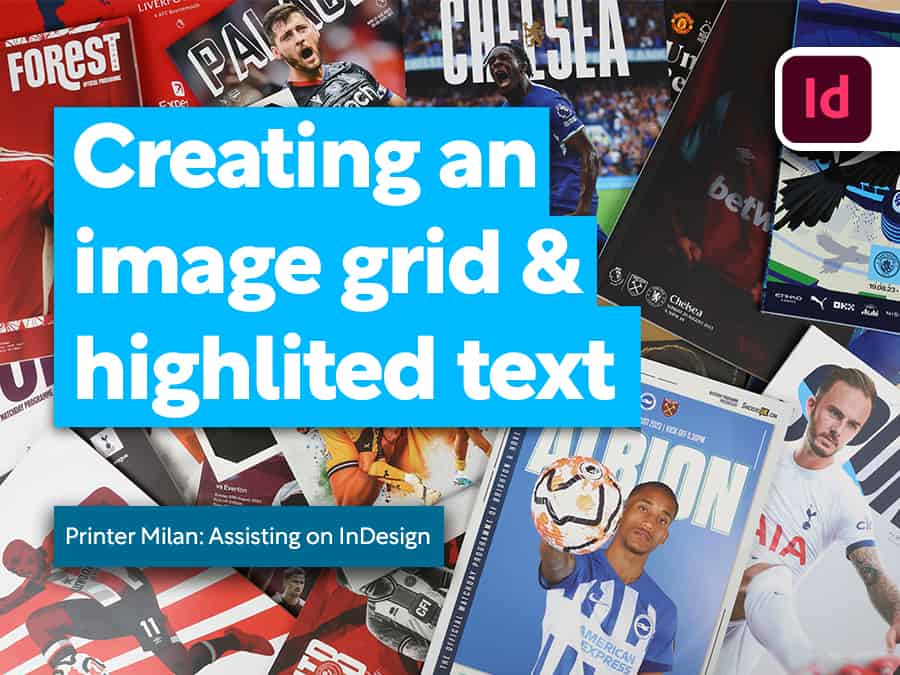For many fans, football programmes are integral to the match-day experience. For graphic designers, they’re the perfect opportunity to flex their InDesign skills.
In this step-by-step video guide, Graphic Designer and football fanatic, Oscar Jackson walks you through the process of setting up a document in Adobe InDesign, making sure it’s prepped and ready for beautiful content all about the beautiful game.
Subscribe to our channel here and click the bell icon to get notified when we upload a design tutorial:
The perfect formation
Follow along as Oscar sets out the framework for the programme, selecting the appropriate number of pages and columns. He’ll also guide you through the process of setting up the correct margins and bleed parameters.
Oscar finishes up by showing you how to create your front cover by placing and aligning a PSD file into InDesign, and how to optimise InDesign’s display performance so that you can review your artwork using the highest picture quality.
A season-long campaign
This is the first video in a series which we will be releasing during the 2023/24 season, Oscar’s guide shows how to create a layout that will result in a digestible and cohesive document, whether it’s a football programme, magazine or business brochure.
Watch out for more design tutorials that take inspiration from the programmes of the 20 Premier League clubs, as we create our own programme based on the designs and techniques that they have used.
Transcription:
Introduction to InDesign Document Setup
In this video, I’ll be showing you how to set up an InDesign document for creating a brochure. So with InDesign open, head over to new file and a tab like this will open. Head over to print at the top. Because I’m creating an A5 brochure, I’m going to use the A5 preset. If your preset isn’t visible here you can always type it on the right.
Page Considerations
So let’s begin with pages. Stapled brochures only allow for pages with a multiple of four and perfect bound brochures only allow for multiples of two. However, when making a perfect bound, you will need quite a bit of pages so that you are able to have a spine. If you have a small number of pages, I recommend going with a stapled brochure. In this case, I’m making a 12-page stapled brochure so I’m just going to put 12 pages here.
Understanding Facing Pages
And then facing pages are a two-page spread, your left and your right page. It just means that when closed the pages will be facing each other. So yes, and you will most likely have this ticked when you’re working on a brochure as it’s such a common thing.
Working with Columns
Columns are a very useful feature so they help arrange text content and copy. It gives it an effective look as well as managing them into a given space. So I’m going to go for two columns and I got a space of five millimeters. The gutter is a space between each column. I will go more in depth about columns later on in this series.
Setting Margins
Right, next up, margins. Margins are the distance from the edge of the page to the content. Margins help you keep a layout making the design more digestible and cohesive. I’d recommend a 10 to 20-millimeter margin when working on a brochure. Depending on the information, maybe if there’s a lot more information and copy, maybe smaller margins. But again, that’s down to personal preference really.
Understanding Bleed
Finally, we have bleed. Bleed is used for most print documents as this is where your artwork will be trimmed once printed. So you need to avoid putting any important information within the bleed area. The common bleed size is three millimeters, so this will be a three-millimeter guide on the edge of your page.
Document Creation
So now let’s go ahead and create the document now that we’ve set up all the details correctly. So as you can see, we’ve got the document opened here and if I zoom out, you can see all the pages we’ve made. We have the front cover and then all the facing pages number 2, 3, 4, 5, 6, 7, 8, 9, 10, 11 and then the back cover 12, which is a single page.
Explanation of Guides
So now let me just run you through the meaning of each guide here. The red line with the grey space to the edge of the page, this is known as the bleed. As I said earlier, you don’t want anything with any important information within that area. This outer border here on the page is known as the margins and these two rectangles are known as the columns with this space in between, known as the gutter.
Importing the Cover
So the first step is creating my cover. Luckily though, I’ve created a cover earlier and here it is. This is a replication of the Wolves cover which I thought stood out from the bunch. I think it had such a lively feel to it. I think the grunge, the idea of a splattered ground, the lighting on the player, the shadows, it just all helped bring this design alive.
Additional Resources
So here’s a before of my one and this is the after once edited. If you want to know how to cut out, like cut out players or a subject from a background or create a layer mask, we all have that on our YouTube channel. We have tutorials, which you can find on our YouTube channel here.
Updating Content
So let me show you how to import that into InDesign. So now if I head over to InDesign and I go up to file and I go down to place and I set my program cover and I just click with it placed. And after, I head to my align area and I align to page and align it to page.
Display Settings and Conclusion
And right now it looks a bit rough like this. This is because if I go to view, my display performance is set to typical display, meaning that it’s trying to prioritize the speed my InDesign runs. However, if I put it on high quality, it may slow down your computer, but you can view it at a higher quality. Thanks for watching this episode. I hope I helped when it comes to setting up an InDesign document. Stay tuned because in the next episode we’ll be going over the Brighton program. Thank you.




